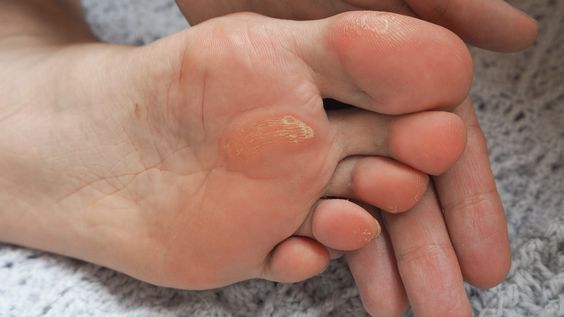How to Treat a Corn or Callus

Introduction:
Corns and calluses can be a common and sometimes painful nuisances, particularly for individuals who are on their feet for extended periods or wear ill-fitting shoes. But fear not, for there are several ways to treat and prevent these skin conditions. In this article, we will discuss the causes of corns and calluses and offer practical tips on how to treat and manage them effectively.
What are Corns and Calluses?
Corns and calluses are thickened, dead skin layers that form as a result of repeated friction or pressure on specific areas of the skin. Corns typically develop on the toes, while calluses can form on the hands, feet, or any part of the body experiencing continuous pressure.
How to Treat Corns and Calluses:
1. Identify the cause: The first step in treating corns and calluses is to determine what is causing the friction or pressure. This may include poor-fitting shoes, high heels that force weight onto the toes, or even activities requiring constant gripping of tools.
2. Soak your feet: Soften the skin by soaking your feet in warm water mixed with Epsom salt for about 15-20 minutes daily. This helps soften corns and calluses, making them easier to remove.
3. Exfoliate gently: After soaking your feet, use a pumice stone or foot file to gently rub away the dead skin layers. Do not apply excessive force when exfoliating; this could result in cuts or additional friction.
4. Moisturize frequently: To reduce friction and keep your skin soft and healthy, apply a moisturizing cream or lotion daily, particularly after exfoliating.
5. Use over-the-counter treatment options: Nonprescription corn and callus medications such as salicylic acid patches can help remove dead skin cells gradually when applied as directed.
6. Opt for custom orthotics or padding: Some individuals may benefit from custom-fitted shoe inserts or padding that reduce pressure on the affected areas. Consult a podiatrist or healthcare professional if you think these options may be suitable for you.
7. Trim your toenails properly: Regularly trim your nails straight across and avoid cutting too close to the skin, which could cause pressure on the toes and additional friction.
How to Prevent Corns and Calluses:
1. Wear well-fitting, comfortable shoes: Invest in shoes that offer plenty of cushioning and support, with enough space for your toes to wiggle freely.
2. Choose socks wisely: Wear socks that fit correctly and provide additional cushioning or support, such as padded athletic socks.
3. Take breaks periodically: Give your feet a break by changing shoes or wearing open-toed footwear when possible, or by resting and elevating your feet during the day.
4. Alternate footwear: Avoid wearing the same shoes every day to help prevent repetitive pressure points on your feet.
Conclusion:
While corns and calluses are not usually a cause for alarm, knowing how to treat them effectively is essential to minimize discomfort and reduce the risk of possible complications. By implementing the tips provided in this guide, you can keep your skin healthy and happy, allowing you to step out in comfort. However, if you experience persistent pain, inflammation, or signs of infection in a corn or callus, it’s essential to consult a healthcare professional for further evaluation and treatment.






